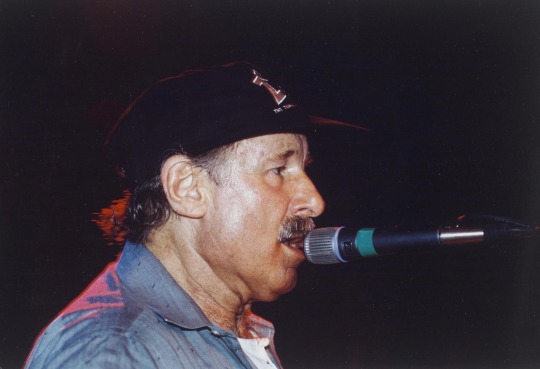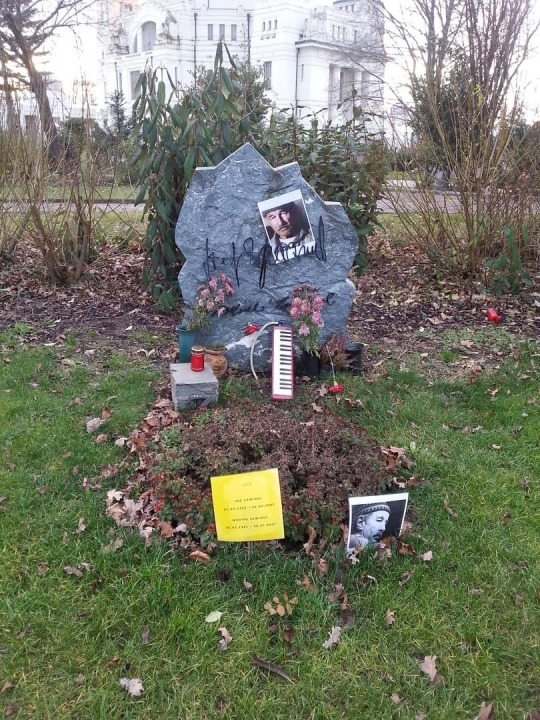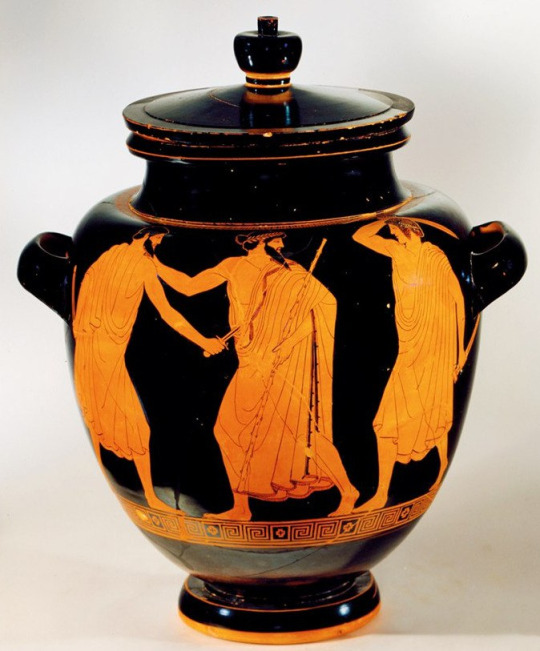#thomas schlosser
Photo










Thomas Schlosser’ Summerhouse, Skagen, Denmark,
The villa was built in 1910 as a studio and residence for painter Carl Locher, according to drawings by his friend, architect Ulrik Plesner.
#art#design#architecture#interiors#interiordesign#villa#summer house#denmark#thomas schlosser#skagen#carl locher#ulrik t#plesner#skagerak#kattegat#luxurylifestyle#luxuryhouses#luxuryhomes#minimal
70 notes
·
View notes
Text





Thomas Schlosser Svendsen’s Christianshavn Terrace House
15 notes
·
View notes
Text





6 notes
·
View notes
Text
Books I want to read in 2024
I was inspired by @fluencylevelfrench to write this post, so here are the 50 books I want to read in 2024, which is my provisional Goodreads goal. (I always set a lowish number and adjust it throughout the year depending on how my goal progresses.) Last year, I read 121 books, so I'm hoping to be able to read at least 100, but I have no idea what my year is going to look like.
1Q84 Book 1 by Haruki Murakami (currently reading)
1Q84 Book 2 by Haruki Murakami
1Q84 Book 3 by Haruki Murakami
Hamburg – hin und zurück by Felix & Theo
Stargirl by Jerry Spinelli
Die Verwandlung by Franz Kafka
Words and Rules: The Ingredients of Language by Steven Pinker
Love, Stargirl by Jerry Spinelli
International Relations Theory by Stephen McGlinchey
You Are What You Speak: Grammar Grouches, Language Laws and the Power of Words by Robert Lane Greene
Freakonomics: A Rogue Economist Explores the Hidden Side of Everything by Steven D. Levitt
Meditations on Diplomacy: Comparative Cases in Diplomatic Practice and Foreign Policy by Stephen Chan
Nickel and Dimed by Barbara Ehrenreich
Reflections on the Posthuman in International Relations: The Anthropocene, Security and Ecology by Clara Eroukhmanoff
In Cold Blood: A True Account of Multiple Murder and Its Consequences by Truman Capote
Haus ohne Hoffnung by Felix & Theo
Effi Briest by Theodor Fontane
Into Thin Air: A Personal Account of the Mount Everest Disaster by Jon Krakauer
Migration and the Ukraine Crisis: A Two-Country Perspective by Agnieszka Pikulicka-Wilczewska and Greta Uehling (eds.)
Writing Systems: An Introduction to Their Linguistic Analysis by Florian Coulmas
Nations under God: The Geopolitics of Faith in the Twenty-First Century by Luke M. Herrington
The Tipping Point: How Little Things Can Make a Big Difference by Malcolm Gladwell
Herr der Diebe by Cornelia Funke
Fast Food Nation: The Dark Side of the All-American Meal by Eric Schlosser
Park Statue Politics: World War II Comfort Women Memorials in the United States by Thomas J. Ward
The Sun Is Also a Star by Nicola Yoon
Restoring Indigenous Self-Determination: Theoretical and Practical Approaches by Marc Woons
Veronikas Geheimnis by Friedhelm Strack
The Sacred and the Sovereign by Özgür Taşkaya
1984 by George Orwell
Sounds of War: Aesthetics, Emotions and Chechnya by Susanna Hast
The Hitchhiker's Guide to the Galaxy by Douglas Adams
Feminists Don't Wear Pink (And Other Lies): Amazing Women on What the F-Word Means to Them by Scarlett Curtis
Into the Eleventh Hour: R2P, Syria and Humanitarianism in Crisis by Robert W. Murray
The Restaurant at the End of the Universe by Douglas Adams
Men Explain Things to Me by Rebecca Solnit
Life, the Universe and Everything by Douglas Adams
Women & Power: A Manifesto by Mary Beard
So Long, and Thanks for All the Fish by Douglas Adams
The Sources of Russia's Great Power Politics: Ukraine and the Challenge to the European Order by Taras Kuzio
Mostly Harmless by Douglas Adams
Women, Race & Class by Angela Y. Davis
Feminism without Borders: Decolonizing Theory, Practicing Solidarity by Chandra Talpade Mohanty
I'll Give You the Sun by Jandy Nelson
The “Clash of Civilizations” 25 Years On: A Multidisciplinary Appraisal by Davide Orsi
Making Space for Indigenous Feminism by Joyce Green
It's Kind of a Funny Story by Ned Vizzini
We Were Liars by E. Lockhart
Hood Feminism: Notes from the Women That a Movement Forgot by Mikki Kendall
Simon vs. the Homo Sapiens Agenda by Becky Albertalli
10 notes
·
View notes
Text
SAT literature list:
Louisa May Alcott, Little Women
Maya Angelou, I Know Why the Caged Bird Sings
Jane Austen, Pride and Prejudice
Francis Bok, Escape from Slavery
Ray Bradbury, Fahrenheit 451
Charlotte Brontë, Jane Eyre
Anthony Burgess, A Clockwork Orange
Paulo Coelho, The Alchemist
James F. Cooper, The Last of the Mohicans
Daniel Defoe, Robinson Crusoe
Charles Dickens,
— A Tale of Two Cities
— David Copperfield
— Great Expectations
— Hard Times
— Oliver Twist
Arthur Conan Doyle, The Adventures of Sherlock Holmes
Alexandre Dumas, The Count of Monte Cristo
George Eliot, Silas Marner
William Golding, Lord of the Flies
Hermann Hesse, Siddhartha
Victor Hugo, Les Miserables
Aldous Huxley, Brave New World
Ken Kesey, One Flew Over the Cuckoo’s Nest
Sue Monk Kidd, The Secret Life of Bees
John Knowles, A Separate Peace
William Goldman, The Princess Bride
John H. Griffen, Black Like Me
John Hersey, Hiroshima
S.E. Hinton, The Outsiders
John Krakauer, Into the Wild
Harper Lee, To Kill a Mockingbird
Lois Lowry, The Giver
Yann Martell, The Life of Pi
Frank McCourt, Angela’s Ashes
Arthur Miller, The Crucible
George Orwell
— Animal Farm
— 1984
Reginald Rose, Twelve Angry Men
Edmond Rostand, Cyrano de Bergerac
J.D. Salinger, Catcher in the Rye
William Shakespeare
— Julius Caesar
— The Merchant of Venice
— Romeo and Juliet
— The Taming of the Shrew
— The Tempest
— Twelfth Night
Mary Shelley, Frankenstein
Betty Smith, A Tree Grows in Brooklyn
John Steinbeck, The Pearl
Bram Stoker, Dracula
J.R.R. Tolkien, The Hobbit
Mark Twain, The Prince and the Pauper
Jules Verne, 20,000 Leagues Under the Sea
John Wyndham, The Chrysalids
Paul Zindel, The Pigman
Margaret Atwood, The Handmaid’s Tale
Mark Bowden, Blackhawk Down
Emily Brontë, Wuthering Heights
Joseph Conrad, Heart of Darkness
Dante, Inferno
Barbara Ehrenreich, Nickel and Dimed
William Faulkner
— As I Lay Dying
— The Sound and the Fury
F. Scott Fitzgerald, The Great Gatsby
Thomas Hardy, Tess of the d’Urbervilles
Ernest Hemingway, The Sun Also Rises
Joseph Heller, Catch-22
Hendry James
— The Portrait of a Lady
— The Wings of the Dove
Sebastian Junger, A Perfect Storm
Sara Lawrence Lightfoot, Balm in Gilead
Ken Kesey, Sometimes a Great Nation
Niccolo Machiavelli
— The Prince
— Discourses on Livy
Gabriel Garcia Marquez, Love in the Time of Cholera
One Hundred Years of Solitude
Herman Melville, Moby Dick
Toni Morrison, The Bluest Eye
Alan Paton, Cry, the Beloved Country
Robert M. Pirsig, Zen and the Art of Motorcycle Maintenance
Sylvia Plath, The Bell Jar
Ayn Rand
— Anthem
— The Fountainhead
Erich M. Ramarque, All Quiet on the Western Front
Eric Schlosser, Fast Food Nation
William Shakespeare
— Hamlet
— King Lear
— Macbeth
John Steinbeck
— The Acts of King Arthur and His Noble Knights
— The Grapes of Wrath
— Of Mice and Men
Amy Tan, The Joy Luck Club
J.R.R. Tolkien, The Fellowship of the Ring
Alice Walker, The Color Purple
Edith Wharton, The Age of Innocence
T.H. White, The Once and Future King
Oscar Wilde, The Picture of Dorian Gray
Evelyn Waugh, Brideshead Revisited
Richard Wright, Black Boy
Virginia Woolf
— Mrs. Dalloway
— To the Lighthouse
Read.
28 notes
·
View notes
Photo

citizen79design
Klassik Copenhagens owner Thomas Schlosser Svendsen’s home in Holmen Copenhagen.
16 notes
·
View notes
Text
Old Vienna
Josef Erich „Joe“ Zawinul

(* 7. Juli 1932 in Wien; † 11. September 2007 ebenda) war ein österreichischer Musiker und einer der einflussreichsten Jazz-Musiker des 20. Jahrhunderts.
Joe Zawinul prägte zunächst als Pianist und Keyboarder, dann auch als Komponist, Bandleader und Arrangeur mehrere Jahrzehnte lang die internationale Musikszene. 1966 schrieb er für das Cannonball Adderley Quintet den Hit Mercy, Mercy, Mercy, der zu einer Referenzaufnahme des Soul Jazz wurde. 1969 komponierte er das Titelstück von Miles Davis' LP In a Silent Way, eines der ersten Fusion-Jazz-Alben, an dem er ebenso entscheidend beteiligt war, wie an dessen „revolutionärer“ LP Bitches Brew (1970). Ende 1970 gründete er mit Wayne Shorter die stilprägende Fusion-Gruppe Weather Report, mit vielen Auszeichnungen gewürdigt und als „die beste Jazzband der letzten 30 Jahre“ von Josef Woodard in Down Beat (2001) bezeichnet.
Neben seinen Erfolgen als Komponist, Arrangeur und Bandleader gilt Zawinul auch als Pionier beim Einsatz elektronischer Instrumente. Er war einer der wenigen Musiker, die auf einem Synthesizer einen eigenen Klang entwickelten. Das zentrale Merkmal seiner späteren Kompositionen ist die Integration ethnischer Musizierstile und Elemente in den Jazzkontext. Er entwickelte diese Klangwelt mit Weather Report und der nachfolgenden Gruppe The Zawinul Syndicate zur Meisterschaft und erhielt dazu auf seinen Welttourneen weitere Anregungen.
LEBEN UND WIRKEN
Jugend
Josef Erich Zawinul war der Sohn des Arbeiters Josef Zawinul, dessen Mutter eine ungarische Sintiza war und dessen Vater aus Südmähren stammte. Er kam aus bescheidenen Verhältnissen, doch zeit seines Lebens war Zawinul stolz auf seine multikulturell beeinflusste Familie und Verwandten; er sah sie als eine Gemeinschaft hart arbeitender, einfacher und liebenswerter Menschen. Zawinuls Vater arbeitete als Schlosser im städtischen Gaswerk in Wien; in seiner Freizeit spielte er Mundharmonika, stemmte Gewichte und boxte. Das Boxen sollte auch für seinen Sohn zur lebenslangen Passion werden. Die Mutter Maria, geb. Hameder, war eine Amateursängerin, sie spielte etwas Klavier und verfügte über das absolute Gehör. Sie arbeitete zunächst als Köchin bei dem großbürgerlichen jüdischen Ehepaar Jocklich, von dem sie bis zu seiner Emigration nach Palästina stets in die Oper mitgenommen wurde. Diese musikalischen Erlebnisse weckten in ihr den Wunsch, dass auch ihr Sohn ein Musiker werden sollte. Danach war sie als Postbedienstete tätig. Josef („Pepe“) wuchs in der Weinlechnergasse 1 im Arbeiterviertel Erdberg, des Wiener Gemeindebezirks Landstraße auf. Daneben hielt er sich oft in Oberkirchbach auf, dem kleinen Heimatdorf seiner Mutter mitten im Wienerwald, die aus einer Familie mit elf Kindern stammte. Sein Zwillingsbruder Erich starb als Vierjähriger an einer Lungenentzündung.
Mit sechs Jahren bekam er ein kleines Akkordeon geschenkt und erhielt Unterricht bei einem Musiklehrer. In seiner Familie und bei Verwandten hörte und sang er von früh an tschechische und slowenische Weisen, ungarische Sinti-Lieder, Polkas und Ländler; nun konnte er sie auch instrumental begleiten und ihnen den Takt vorgeben. Nach einem Dreivierteljahr erklärte sein Musiklehrer Zawinuls Mutter: „Frau Zawinul, ich kann dem Bub nichts mehr beibringen, der hat so viel Talent für Musik, der sollte eigentlich ins Konservatorium gehen.“
Als sich dabei herausstellte, dass auch er über das absolute Gehör verfügte, erhielt er einen Freiplatz (kostenlosen Unterricht) am damaligen Konservatorium der Stadt Wien, wo er Unterricht in Klavier, Violine und Klarinette nahm. Damit bereitete er sich anfangs auf eine Karriere als klassischer Pianist vor, dem er jedoch zunehmend nur mehr aus Pflichterfüllung nachkam. Ab 1945 besuchte er das Realgymnasium in der Hagenmüllergasse (3. Bezirk); sein Klassenkamerad und enger Freund wurde Thomas Klestil, der spätere Bundespräsident. Freimütig erzählten später beide über gemeinsame Streiche wie etwa kostenlose Besuche im Freibad und im Kino.
Einen tiefen Eindruck auf den jungen Zawinul hinterließ der Musical-Film Stormy Weather (1943), in dem die Spitzenstars des schwarzen Entertainments auftraten: Der Tänzer Bill „Bojangles“ Robinson, das Orchester von Cab Calloway, der Pianist Fats Waller, Dooley Wilson (bekannt als Sam aus Casablanca, 1942) und die Schauspielerin Lena Horne. Zawinul sah sich den Film 24-mal an und verliebte sich in die Hauptdarstellerin Lena Horne, die er auch heiraten wollte. Die Qualität des Films war nicht nur eine von Zawinul subjektiv erlebte, denn im Jahr 2001 würdigte die Library of Congress den Film als „kulturell wertvoll“ und hielt ihn einer besonderen Aufbewahrung in der National Film Registry wert. 1977 nannte Zawinul eine Weather Report-LP Heavy Weather.
Modern Jazz
Mit zwölf Jahren hörte er zum ersten Mal Jazzmusik und war auf der Stelle davon eingenommen; ein Mitschüler seines Internats im Sudetenland spielte am Klavier Honeysuckle Rose. „Des war guad. Und i hob mir denkt, wow, des is was, des g’fallt mir.“ Als Siebzehnjähriger brach er die intensiven Vorbereitungen zu dem Genfer Klavierwettbewerb 1949 unvermittelt ab und wandte sich dem Jazz zu. Ein Studienfreund aus jenen Tagen war der zwei Jahre ältere Friedrich Gulda, den er 1951 kennenlernte. Ab 1952 arbeitet er als Jazzmusiker mit anderen österreichischen Musikern zusammen.
Nach ersten Erfahrungen unter anderem in der Combo von Vera Auer und bei Hans Koller war er 1954 mit Hans Salomon Mitbegründer der Austrian All Stars, zu denen weiterhin Karl Drewo, Rudolf Hansen und Viktor Plasil gehörten, und die als Wegbereiter des Cool Jazz in Österreich gelten. Deren Plattenaufnahmen erfuhren auch durch Guldas Förderung eine internationale Anerkennung und fanden sogar im amerikanischen Fachmagazin Down Beat Aufmerksamkeit. 1955/56 wechselte er mit der gesamten Besetzung der Austrian All Stars in die Johannes Fehring Big Band. 1956 wechselte er zur damals erfolgreichsten österreichischen Jazzband, der Two Sound Band von Fatty George. Nachdem er sich erfolgreich um ein Stipendium an der Berklee School in Boston beworben hatte, reiste er per Bahn und Schiff im Januar 1959 für zunächst nur vier Monate und mit 800 Dollar in die USA. Er ging mit dem festen Vorsatz in die USA, nicht mehr dauerhaft nach Europa zurückzukehren. Tatsächlich konnte er mit einer nahezu nahtlosen Serie von Engagements anschließen und sich weiterentwickeln.
Noch am Abend seiner Ankunft in New York City ging er in einen Club und traf dort auf Wilbur Ware, Louis Hayes und jammte mit Charlie Mariano. Zwei Tage später rief der Impresario George Wein an, der für Ella Fitzgerald einen Pianisten als Liedbegleiter suchte. Zawinul nahm dankbar an und bewährte sich.
Wenige Tage danach (die Angaben schwanken von einer bis zu drei Wochen) wurde er als Pianist der Maynard Ferguson Band engagiert. Er brach die Ausbildung in Boston ab, zog um nach New York und spielte für acht Monate im Maynard-Ferguson-Orchestra. Ferguson beschaffte ihm die Aufenthaltserlaubnis (Green Card), die nach vier Monaten erforderlich geworden war, und die Arbeitserlaubnis bei der Gewerkschaft. Zawinul fand sich erstaunlich schnell in der schwarzen Musiker-Community zurecht. Seine Offenheit beschränkte sich nicht nur auf das Zusammenspiel, sondern umfasste auch das gemeinsame Reisen und Wohnen mit seinen schwarzen Kollegen unter den Zumutungen der damaligen Rassentrennung in den USA. Dinah Washington engagierte ihn als Pianisten und stellte ihn ihrem Publikum als „Joe Vienna“ vor; Zawinul blieb bei ihr zwei Jahre lang. Miles Davis wurde auf ihn aufmerksam und lud ihn als Mitspieler in seine Band ein. Doch Zawinul lehnte ab, es sei noch nicht die richtige Zeit dafür – und setzte hinzu, wenn es einmal so weit sei, dann würden sie beide Musikgeschichte schreiben. Davis war von seiner Absage nicht aufgebracht und respektierte seinen Standpunkt. 1962 heiratete Zawinul Maxine, die er im berühmten New Yorker Jazzclub Birdland kennengelernt hatte und die das erste schwarze Playboy-Bunny gewesen war; ihr Trauzeuge war Cannonball Adderley.
Von 1961 bis 1970 spielte er im Quintett von Cannonball Adderley, Zawinul sprach nur in größter Verehrung über seinen Mentor, er sei der am meisten unterschätzte Musiker des 20. Jahrhunderts gewesen. Nie hätte er ihn einen Fehler spielen hören. Immer, wenn manchmal Kritik von Schwarzen aufkam, dass ein Weißer in seiner Gruppe spielte, konterte dieser: „Bringt mir einen, der so spielen kann wie Joe, dann engagiere ich ihn sofort!“ Für dessen Band komponierte er nahezu sechzig Stücke.
1966 hatte er seinen ersten großen Hit Mercy, Mercy, Mercy, entwickelt aus einer Begleitfigur eines Songs für Dinah Washington. Er spielte erstmals für eine Aufnahme auf einem elektrischen Piano, einem Wurlitzer Electric Piano, in der LP-Version ist es ein Fender Rhodes. Über eine Million Singles wurden davon verkauft und es ist bis heute die meistverkaufte Jazzaufnahme. Miles Davis war so sehr von dem warmen Klang angetan, dass er eine Woche nach der Veröffentlichung seinem Bandmitglied Herbie Hancock auch ein E-Piano kaufte. Weitere Hits waren Country Preacher und Walk Tall (1969), die er anlässlich eines Wohltätigkeitsgottesdienstes von Reverend Jesse Jackson für das von Martin Luther King gegründete Stipendiatenprogramm Operation Breadbasket komponiert hatte. Ende der 1960er-Jahre trat das Cannonball Adderley Quintet mehrfach als Vorgruppe von englischen Supergroups des Rock ’n’ Roll wie The Who auf. Das System des sogenannten double billings wurde wegbereitend für die sich anbahnende Fusion von Jazzmusik und Rock.
Electric Jazz: Weather Report
WEATHER REPORT, 1980
Jazzhistoriker bezeichnen als eine entscheidende Phase in der Entwicklung des Fusion-Stils die Zusammenarbeit Zawinuls mit Miles Davis 1969/70. Die bahnbrechende LP war In a Silent Way (1969). Zawinul komponierte das Titelstück, Davis änderte nur ein paar Akkorde und führte es unter eigenem Namen auf. Das Album Bitches Brew (1970) knüpfte an seinen Vorgänger an und erweiterte den Raum für freie Improvisation. Im November 1970 in New York gründete Zawinul dann zusammen mit dem Saxophonisten Wayne Shorter und dem Kontrabassisten und E-Bassisten Miroslav Vitouš die legendäre Jazz-Rock-Formation Weather Report. Der Einsatz von Percussion zusätzlich zum Schlagzeug förderte die Dynamik und das Spielen komplexer Polyrhythmen. Zawinul löste sich vom alten 32-Takte-System, brach mit dem Thema–Solo–Thema–Schema und führte neue Formen ein.
Von 1976 bis 1982 übernahm Jaco Pastorius den Bass, ein Zeitabschnitt, der als die Hochphase der Gruppe gilt. Bis 1985 feierte die Band Weather Report ihre größten kommerziellen Erfolge, unter anderem 1977 mit dem von Zawinul komponierten Welthit Birdland. Die Komposition wurde in drei Versionen von Weather Report, Manhattan Transfer (Extensions, 1980) und Quincy Jones (Back on the Block, 1989) mit je einem Grammy ausgezeichnet.
Zawinuls Musik mit Weather Report war tatsächlich ein Erfolg auf der ganzen Welt; besonders afrikanische Zuhörer liebten diesen Sound. Sein Intro zu dem Stück Black Market war mehr als 20 Jahre lang die Erkennungsmelodie von Radio Dakar im Senegal. Weather Report-Platten machten als raubkopierte Kassetten die Runde und beeinflussten eine ganze Generation von afrikanischen Musikern. Seine späteren afrikanischen Bandmitglieder im Zawinul Syndicate baten ihn darum, mitspielen zu können – wegen ihrer Wertschätzung der Musik von Weather Report.
World Jazz: Zawinul Syndicate
THE ZAWINUL SYNDICATE, 2007
Von 1986 bis 1989 gab er mit Friedrich Gulda mehrere Konzerte, für die er zwar die höchsten Gagen in seinem Musikerleben erhielt, die er jedoch nur ungern absolvierte.
Seit 1988 entwickelte Zawinul mit seinem Ensemble, dem Zawinul Syndicate einen unverkennbaren Stil, der die Grenzen zwischen Jazz, Welt- und Tanzmusik auflöste. Nach eigenen Angaben hat er den Hip-Hop-Beat kreiert (nicht zu verwechseln mit Hip-Hop an sich); die Stücke 125th Street Congress und Boogie Woogie Waltz auf dem Weather-Report-Album Sweetnighter (1973) wurden von „50 oder 60 verschiedene[n] Rap-Gruppen“ als Grundlage für ihren Rap übernommen. 1991 produzierte, arrangierte und spielte er die Aufnahmen des Konzeptalbums Amen für den malischen Sänger Salif Keïta. Begleiter waren unter anderem Carlos Santana und Wayne Shorter. Miles Davis, der auch in Malibu wohnte, sagte Zawinul zunächst zu, bestand dann jedoch auf einer höheren Gage. In Frankreich wählte man das Album zur besten Weltmusikplatte aller Zeiten.
TOD
Zwischen 1992 und 1996 nahm er mit 35 Musikern aus der ganzen Welt das Album My People auf. Musikalische Einflüsse aus Afrika, der Karibik, Südamerika, Europa, dem Nahen Osten und den USA verbindet darin Zawinul zu einer universellen Musiksprache wie noch nie zuvor gehört.
Eine Woche nach seiner sechswöchigen Europatournee wurde Zawinul am 7. August 2007 wegen einer seltenen Hautkrebserkrankung, eines Merkelzellkarzinoms, ins Wiener Wilhelminenspital eingeliefert. Am 11. September 2007 um 4:55 Uhr verstarb der Musiker im Alter von 75 Jahren. Seine Ehefrau Maxine war nur wenige Wochen vor ihm am 26. Juli 2007 gestorben.
Wiens Bürgermeister Michael Häupl veranlasste, dass ihm ein Ehrengrab der Stadt Wien auf dem Zentralfriedhof zugewiesen wurde. In einer Trauerfeier, die von seinen Weggefährten musikalisch begleitet wurde, konnte die Öffentlichkeit am 25. September 2007 Abschied nehmen. Die Einäscherung und Beisetzung erfolgte wenige Tage später im engsten Familienkreis. Die Urnen mit der Asche Joe Zawinuls und seiner Frau Maxine ruhen im Grab Nr. 39 der Gruppe 33G.
FAMILIE
Seit Ende der 1960er-Jahre flog Zawinul fünf- bis sechsmal pro Jahr nach Wien zu seinen Eltern und Freunden.
Seine Familie wohnte seit 1972 in Pasadena und später in Malibu, einem Haus mit Tonstudio und Blick auf den Pazifik. Ein Buschbrand hatte hier im Herbst 1993 beinahe sein Haus mit seinen Aufnahmen vernichtet.
Zawinul hinterließ drei Söhne: den Filmemacher und Filmkomponisten Anthony, den Wiener Konzertveranstalter Erich (1966–2021) und Ivan, einen Dozenten für Aufnahmetechnik am Musicians Institute in Hollywood. Ivan (* 1969) arbeitete mit ihm in seinen letzten 15 Jahren als Tontechniker und Koproduzent seiner Aufnahmen zusammen. Der älteste Sohn Tony lebte von 1993 bis 2008 in Mailand und arbeitete dort im Filmgeschäft. Seit 2015 bereitet er die Produktion zweier Dokumentarfilme über seinen Vater vor.
Fotos:
1986, Franz Mrkvicka überreicht Joe Zawinul Goldenes Ehrenzeichen

Joe Zawinul, The Zawinul Syndicate, Freiburg, 2007

Weather Report, 1980

Grab von Joe Zawinul im Wiener Zentralfriedhof, Gruppe 33G, Nr. 39 (2014)

0 notes
Text
DOD Featured Photos
Observation
Navy Seaman Catherine Schlosser, left, and Seaman Carolyn Kowal-Safron observe from the starboard br… Photo Details >
Plotting Coordinates
Marine Corps Cpl. Joey Hernandez, left, and Sgt. Thomas Bunting plot grid coordinates and mark a pot… Photo Details >
Flying in Formation
An Air Force A-10 Thunderbolt II aircraft flies in formation behind a KC-135 Stratotanker in Iceland… Photo…

View On WordPress
0 notes
Photo


CALIFICACIÓN PERSONAL: 8 / 10
Título Original: The Salvation
Año: 2014
Duración: 92 min
País: Dinamarca
Dirección: Kristian Levring
Guion: Anders Thomas Jensen, Kristian Levring
Música: Kasper Winding
Fotografía: Jens Schlosser
Reparto: Mads Mikkelsen, Eva Green, Jeffrey Dean Morgan, Michael Raymond-James, Sivan Raphaely, Douglas Henshall, Mikael Persbrandt, Jonathan Pryce, Eric Cantona, Alexander Arnold, Nanna Øland Fabricius, Toke Lars Bjarke
Productora: Zentropa Productions, Spier Films
Género: Western; Drama; Action; Thriller
https://www.imdb.com/title/tt2720680/
TRAILER:
dailymotion
0 notes
Text
Events 7.5
328 – The official opening of Constantine's Bridge built over the Danube between Sucidava (Corabia, Romania) and Oescus (Gigen, Bulgaria) by the Roman architect Theophilus Patricius.
1316 – The Burgundian and Majorcan claimants of the Principality of Achaea meet in the Battle of Manolada.
1594 – Portuguese forces under the command of Pedro Lopes de Sousa begin an unsuccessful invasion of the Kingdom of Kandy during the Campaign of Danture in Sri Lanka.
1610 – John Guy sets sail from Bristol with 39 other colonists for Newfoundland.
1687 – Isaac Newton publishes Philosophiæ Naturalis Principia Mathematica.
1770 – The Battle of Chesma between the Russian Empire and the Ottoman Empire begins.
1775 – The Second Continental Congress adopts the Olive Branch Petition.
1803 – The Convention of Artlenburg is signed, leading to the French occupation of the Electorate of Hanover (which had been ruled by the British king).
1807 – In Buenos Aires the local militias repel the British soldiers within the Second English Invasion.
1809 – The Battle of Wagram between the French and Austrian Empires begins.
1811 – The Venezuelan Declaration of Independence is adopted by a congress of the provinces.
1813 – War of 1812: Three weeks of British raids on Fort Schlosser, Black Rock and Plattsburgh, New York commence.
1814 – War of 1812: Battle of Chippawa: American Major General Jacob Brown defeats British General Phineas Riall at Chippawa, Ontario.
1833 – Lê Văn Khôi along with 27 soldiers stage a mutiny taking over the Phiên An citadel, developing into the Lê Văn Khôi revolt against Emperor Minh Mạng.
1833 – Admiral Charles Napier vanquishes the navy of the Portuguese usurper Dom Miguel at the third Battle of Cape St. Vincent.
1841 – Thomas Cook organises the first package excursion, from Leicester to Loughborough.
1852 – Frederick Douglass delivers his "What to the Slave Is the Fourth of July?" speech in Rochester, New York.
1859 – The United States discovers and claims Midway Atoll.
1865 – The United States Secret Service begins operation.
1884 – Germany takes possession of Cameroon.
1915 – The Liberty Bell leaves Philadelphia by special train on its way to the Panama–Pacific International Exposition. This is the last trip outside Philadelphia that the custodians of the bell intend to permit.
1934 – "Bloody Thursday": the police open fire on striking longshoremen in San Francisco.
1935 – The National Labor Relations Act, which governs labor relations in the United States, is signed into law by President Franklin D. Roosevelt.
1937 – Spam, the luncheon meat, is introduced into the market by the Hormel Foods Corporation.
1940 – World War II: Foreign relations of Vichy France are severed with the United Kingdom.
1941 – World War II: Operation Barbarossa: German troops reach the Dnieper river.
1943 – World War II: An Allied invasion fleet sails for Sicily (Operation Husky, July 10, 1943).
1943 – World War II: German forces begin a massive offensive against the Soviet Union at the Battle of Kursk, also known as Operation Citadel.
1945 – The United Kingdom holds its first general election in 10 years, which would be won by Clement Attlee's Labour Party.
1946 – Micheline Bernardini models the first modern bikini at a swimming pool in Paris.
1948 – National Health Service Acts create the national public health system in the United Kingdom.
1950 – Korean War: Task Force Smith: American and North Korean forces first clash, in the Battle of Osan.
1950 – Zionism: The Knesset passes the Law of Return which grants all Jews the right to immigrate to Israel.
1954 – The BBC broadcasts its first daily television news bulletin.
1954 – Elvis Presley records his first single, "That's All Right", at Sun Records in Memphis, Tennessee.
1962 – The official independence of Algeria is proclaimed after an eight-year-long war with France.
1970 – Air Canada Flight 621 crashes in Brampton, Ontario, Canada, killing all 109 people on board.
1971 – The Twenty-sixth Amendment to the United States Constitution, lowering the voting age from 21 to 18 years, is formally certified by President Richard Nixon.
1973 – A boiling liquid expanding vapor explosion (BLEVE) in Kingman, Arizona, following a fire that broke out as propane was being transferred from a railroad car to a storage tank, kills eleven firefighters.
1973 – Juvénal Habyarimana seizes power over Rwanda in a coup d'état.
1975 – Arthur Ashe becomes the first black man to win the Wimbledon singles title.
1975 – Cape Verde gains its independence from Portugal.
1977 – The Pakistan Armed Forces under Muhammad Zia-ul-Haq seize power in Operation Fair Play and begin 11 years of martial law. Zulfikar Ali Bhutto, the first elected Prime Minister of Pakistan, is overthrown.
1980 – Swedish tennis player Björn Borg wins his fifth Wimbledon final and becomes the first male tennis player to win the championships five times in a row (1976–1980).
1984 – The United States Supreme Court gives its United States v. Leon decision providing a good-faith exception from the Fourth Amendment exclusionary rule against use of evidence obtained through defective warrants in criminal trials.
1987 – Sri Lankan Civil War: The LTTE uses suicide attacks on the Sri Lankan Army for the first time. The Black Tigers are born and, in the following years, will continue to kill with the tactic.
1989 – Iran–Contra affair: Oliver North is sentenced by U.S. District Judge Gerhard A. Gesell to a three-year suspended prison term, two years probation, $150,000 in fines and 1,200 hours community service. His convictions are later overturned.
1994 – Jeff Bezos founds Amazon.
1995 – Armenia adopts its constitution, four years after its independence from the Soviet Union.
1996 – Dolly the sheep becomes the first mammal cloned from an adult cell.
1997 – Sri Lankan Civil War: Sri Lankan Tamil MP A. Thangathurai is shot dead at Sri Shanmuga Hindu Ladies College in Trincomalee.
1999 – U.S. President Bill Clinton imposes trade and economic sanctions against the Taliban regime in Afghanistan.
2003 – The World Health Organization announces that the 2002–2004 SARS outbreak has been contained.
2004 – The first direct Indonesian presidential election is held.
2006 – North Korea tests four short-range missiles, one medium-range missile and a long-range Taepodong-2. The long-range Taepodong-2 reportedly fails in mid-air over the Sea of Japan.
2009 – A series of violent riots break out in Ürümqi, the capital city of the Xinjiang Uyghur Autonomous Region in China.
2009 – The largest hoard of Anglo-Saxon gold ever discovered in Britain, consisting of more than 1,500 items, is found near the village of Hammerwich, near Lichfield, Staffordshire.
2012 – The Shard in London is inaugurated as the tallest building in Europe, with a height of 310 metres (1,020 ft).
2016 – The Juno space probe arrives at Jupiter and begins a 20-month survey of the planet.
0 notes
Video
youtube
baglaens by Lowly from the album hifalutin - Concept & Directed by: Henrik Vibskov
#music#lowly#danish music#kasper staub#nanna schannong#soffie viemose#thomas lund#video#music video#henrik vibskov#viggo grumme#jens schlosser#jens olpindo koefoed#christoffer schuricht#siri vittrup#marie sloth#marie sloth rousing#carlijn veurink#ji yoon um
11 notes
·
View notes
Photo

#hans wegner#hans wegner chair#hans wegner halyard chair#halyard chair#Thomas schlosser svendsen#klassik#interiors#loft#interior design#copenhagen
1 note
·
View note
Text
Herodotus and Democracy- IV
“Herodotean Democracies
Joel Schlosser
IV.
4§1 The distinctions among different forms of equality and their applicability not just to democracies but to other non-tyrannical regimes changes the meaning of Herodotean politics. In the first place, Herodotus’ use of isêgoria and isokratia and not isonomia to describe Athens could be taken as a veiled critique of the emptiness of the rhetoric of isonomia (and even its institutions) in the Athens of his day.[14] This critique may connect with Herodotus’ revision of the founding legend of the tyrannicides: as the song of Harmodius associates the tyrant-slaying with making Athens isonomous so Herodotus believes these acts only exacerbate Athens’ suffering under the tyrants (5.55 and 6.123). Herodotus may also have intended to include Pericles and the Athenian empire in his criticisms, as the Histories associate isonomia with leaders using the term in potentially manipulative ways and with imperialism as antithetical to the popular movements that support freedom.
4§2 There is a broader significance to this reading of Herodotean democracies. Given that the Histories show the possibility of equality in many different regimes, Herodotus implies a distinction between democratic and non-democratic equality.[15] The Spartans enjoy a kind of isokratia while being governed with a quasi-oligarchical government. The first (and only other) use of this term comes during the descriptions of the various peoples of Scythia. Describing the Issedones, the narrator writes:
In other respects the Issedones appear to have a sound sense of justice and among them men and women have equal authority [isokratees de homoiôs hai gunaikes toisi andrasi]. (4.37).
4§3 We know very little else about the Issedones other than their position in northern climes not regarded by many as conducive to free government. This may be an isokratia within a kingship.[16]
4§4 My reading of Herodotean democracies thus suggests that good government is possible anywhere – insofar as we assume good government involves “the most beautiful of names,” isonomia or its sister concepts isêgoria and isokratia. These forms of equality may be realized through democratic regimes, but also through oligarchies and perhaps even kingships. These concepts share an anti-tyrannical orientation yet they differ in their practical, cultural, and institutional implications. Equality (iso– ) helps to prevent tyranny yet can be realized in a variety of ways.
4§5 This “anywhere” is an important Herodotean insight, but it’s also not unqualified. Unlike the Hippocratic writers of his era, Herodotus does not defend a unidirectional relationship where climate determines political regime. The variety of democracies reflects a variety of customs, cultures, and laws – nomoi – where these arise. As Thomas puts it, “democracy is a nomos.” How this nomos is inflected by environment, both human and non-human, serves as the subject of much of the Histories.[17] Yet the contrast between the successful Athenian and the failed Ionian revolutions does suggest that setting up – to borrow the term to describe Cleisthenes’ deed – a regime based on equality requires particular circumstances. The Ionians may want freedom yet they cannot organize themselves to grasp it (4.142). Their geographic position also places them in the middle of the Mediterranean crossfire.
4§6 The success of the Athenians points to an underlying political logic across the Histories.
4§7 Recall that the narrator praises Athens’ isêgoria not for its intrinsic value but rather for the freedom it won. Freedom, eleutheria, is the chief political virtue for Herodotus; practices of equality, like isêgoria, we might add, are its instruments. It may be that while the Histories present a critical evaluation of the Athens of its day, this critique also acknowledges Athens’ fortunate position: the Athenians have sufficiently united to affirm and sustain their freedom whereas the Persians could not sustain the unity that brought them freedom in the first place.[18] It cannot be coincidental that the praise of Athens’ isêgoria and isokratia occurs just as the democratic revolution has taken place.
4§8 Moreover, despite possessing isokratia, the Issedones and the Spartans both lack isêgoria – this further sets the Athenians apart. The Spartans also serve their nomoi as a dêspotes, a master, unlike the Athenians. The Athenians adopt new nomoi in the form of Kleisthenes’ reorganization. Unlike any other community in the Histories, we encounter multiple iterations of nomoi with the Athenians: Solon’s reforms, the beneficial tyranny of Peisistratus, the harsher tyrants subsequently, and the democratic moment when Kleisthenes and the people unite.
4§9 On the other hand (and to return to the possible critique of Athens contained within the treatment of the tyrannicides and implicit criticism of isonomia), we might speculate that what took Herodotus to Thurii was the opportunity to construct a polity that improved on Athens. Thurii could have developed beyond a mere commitment to equality of law to create and sustain robust practices of equal participation (isêgoriê) and equal influence (isokratia). The lack of a Periclean leader and the attention to an architecture that would support continuous practices of political equality further suggest this. The Histories show us again and again just how integral equality is to individual and communal flourishing.”
Source: https://research-bulletin.chs.harvard.edu/2017/04/17/herodotean-democracies/

Ancient Attic stamnos with depiction of the tyrannicide of Harmodius and Aristogeiton, currently at Martin von Wagner Museum, Wurzburg, Germany -Source: http://andrejkoymasky.com/liv/fam/bioh1/harmod01.html
1 note
·
View note
Text
‘Korte’inhoud over het boek
In deze post ga ik jullie uitleggen waarover het boek gaat dat ik de voorbije maand heb gelezen. Ik heb een samenvatting hierover gemaakt en die ga ik nu brengen in deze post.
samenvatting: Het boek gaat over een huisarts genaamd Marc Schlosser dat een van zijn patiënten (Ralph Meier) heeft vermoord d.m.v. een 'medische fout'. De vrouw van Ralph (Judith) beschuldigd Marc voor de dood van haar man en sleept hem voor Het Medisch Tucht College. Dit betekent als het college erachter komt dat Marc Ralph met een 'medische fout' heeft vermoord kan hij voor de rechter gesleept worden. Na dit deel v/h boek komt de lezer terecht in een enorme flashback voor de dood van Ralph Meier en waarom hij eigenlijk is 'vermoord'. Dus in de flashback gaat Marc naar een feest van de acteur Ralph Meier. Hier ziet hij hoe Ralph naar zijn vrouw (Caroline) kijkt alsof zij een hapje is, omdat Ralph dit doet probeert hij Judith te versieren om aan te tonen dat hij een 'leuke man' is. Judith vraagt aan Marc of hij en zijn gezin naar het zomerhuis met zwembad gaan omdat haar zonen (Alex en Thomas) en de dochters van Ralph (Julia en Lisa) het goed met elkaar kunnen vinden. Marc zei tegen zijn vrouw hoe Ralph 'vuil' naar haar keek en nu wilt ze niet meer op vakantie bij de familie Meier. Tijdens de vakantie ging Marc en zijn familie kamperen op een natuurcamping. Wat Caroline niet weet is dat Marc een camping heeft uitgekozen naast het zomerhuis v/d familie Meier. Op de derde dag zien ze de familie Meier op het strand en worden ze uitgenodigd voor een BBQ bij hun zomerhuis met zwembad. Als ze naar het zomerhuis gaan zien ze dat de Amerikaanse regisseur Stanley Forbes met zijn veel jongere vriendinnetje Emmanuelle en de moeder van Judith hier verblijven. Ralph vraagt of ze bij hun kunnen intrekken omdat de camping toch niet zo goed is en omdat de meisjes het goed kunnen vinden met de jongens. Alles wordt nogal intiem, Ralph houdt zich o.a. bezig met het naar beneden trekken van de bikinibroekjes van Julia en Lisa. S 'avonds zijn ze dronken en steken ze vuurwerk aan daarna rijden ze opzettelijk de milieubewuste campinghouder aan omdat hij de dieren aan het ondervoeden was. Ze gingen hierna het vuurwerken aansteken bij het strand dit zorgt voor een conflict tussen Judith en Ralph. Dan wordt het de nacht die een keerpunt betekent in het leven van Marc namelijk terwijl dat hij in een strandtent met Ralph en Stanley wordt versierd door Noorse en Letse vrouwen. Terwijl hij versierd werd komt hij te weten dat zijn oudste dochter Lisa is verkracht. Na al dit gebeuren vertrekken ze terug naar Nederland tijdens de reis denkt Marc dat Ralph zijn dochter heeft vermoord en wilt wraak nemen. Ralph komt langs met kanker gezwellen en om wraak te nemen verspreid hij de kanker nog sneller. Na de dood belt een oud leerling hem van het College (dus nu zijn we terug in het heden) hem en ondervraagt hem, Marc verteld alles wat er is gebeurd. De oud-leerling zegt dat Marc naar het buitenland moet verhuizen anders wordt hij voor de rechtbank gesleept dus verhuist Marc naar Noord-Amerika bij de regisseur Stanley. Wie heeft Marc zijn dochter nu eigenlijk verkracht? Dit kom je te weten als je het boek leest.
Tot de volgende post! Maxim
1 note
·
View note
Photo

klassikcopenhagen
A snapshot from the private residence of our CEO, Thomas Schlosser 🍃
#klassikcopenhagen
20 notes
·
View notes
Photo



Brian Epstein’s Address & Telephone Book
A small leather bound pocket address and telephone book that was owned and used by Brian Epstein. The book dates to 1967 and it consists of 57 pages of addresses and telephone number some of which are typed, some of which are in Epstein’s hand and some which have been added by hand on his behalf. // (click HERE to view more pages from the book)
The book contains a total of 404 entries - a selection of them are listed below:
A
ATV Ltd
ABC Television Ltd
AIR London Ltd.
Tom Arnold Ltd
Neil Aspinall
Artistes Car Hire
Annabels [nightclub]
Alexander’s Restaurant
Ashley Steiner Famous [talent agency]
Al Aronowitz
Atlantic Records
Eric Andersen
Bob Anthony
B
Bryce Hanmer & Co [accounting firm]
Bedford, Okrent & Co
BBC Television Centre
BBC Broadcasting House
Al Brodax
Cilla Black
Mr. & Mrs. Tony Barrow
Mr. & Mrs Don Black
Bryan Barrett
Jack Barclay Ltd [Bentley dealership]
Peter Brown
Mr. & Mrs. B. Bullough
Mr. & Mrs J. Bullough
Miss J. Balmer
Mr. &. Mrs. Ivan Bennett
Eric Burdon
Francisco Bermudez
Lionel Bart
David Bailey
Bag O’Nails
Tony Barlow
Ray Bartell
Rodney Barnes
Bruno One Restaurant
Sid Bernstein
Kenn Brodziak
Leonard Bernstein
Al Bennett
Beverly Hills Hotel
Brian Bedford
Scotty Bower
David Ballman
Bob Bonis
Bill Buist
Arthur Buist
C
Dr. Norman Cowan
Curzon House Club
Crockfords Club
Clermont Club
Cromwellian Club
Paddy Chambers
Radio Caroline
Michael Codron
Cap-Estel Le
Mr. & Mrs. J. Cassen
Columbia Pictures Ltd
Eric Clapton
Capitol Records Mexico
Michael Cooper
Roger Curtis
Neil Christian
Maureen Cleave
Thomas Clyde
Cash Box
CBS Records Ltd
Denny Cordell
William Cavendish
Caprice Restuarant
David Charkham
Capitol Records
Columbia Broadcasting System
Bob Crewe
May Cunnell
Car Hire Co. for Lincoln
Dr. Kenneth Chesky
Capitol Records (Voyle Gilmore)
Irving E. Chezar
Danny Cleary
Bobby Colomby
Bob Casper
Andre Cadet
D
Daily Express
Disc & Music Echo
Decca Records
Bernard Delfont Ltd
Bernard Delfont
Noel Dixon
Jimmy Douglas
Chris Denning
Simon Dee
Rik Dane
Dolly’s [nightclub]
Hunter Davies
Terry Doran
Pat Doncaster
Norrie Drummond
Alan David
John Dunbar
Peter Dalton
Kappy Ditson
Robert Dunlap
Robert L. David
Diana Dors
Ivor Davis
Tom Dawes
Brandon de Wilde
Don Danneman
E
Malcolm Evans
Clive J. Epstein
Mr. & Mrs. H. Epstein
EMI Records Ltd
EMI Studios
Geoffrey Ellis
Etoile Restaurant
Tim Ellis
Terry Eaton
Kenny Everett
John East
Bob Eubanks
Esther Edwards
Ahmet Ertegun
F
Alan Freeman
David Frost
Georgie Fame
Robert Fraser
Andre Fattacini
Dan Farson
Billy Fury
Barry Finch
Marianne Faithfull
Robert Fitzpatrick
Warren Frederikson
John Fisher
Danny Fields
Francis Fiorino
G
Dr. Geoffrey Gray
Hamish Grimes
Derek Grainger
Rik Gunnell
Rik Gunnell Agency Ltd
Derrick Goodman & Co.
Peter Goldman
Christopher Gibbs
David Garrick
Geoffrey Grant
Mick Green
John P. Greenside
Michael Gillet
General Artists Corp.
John Gillespie
Voyle Gilmore
George Greif
Ren Grevatt
Milton Goldman
M. Goldstein
Gary Grove
Henry Grossman
H
Mr. & Mrs. Berrell Hyman
Doreen Hyman
Mr. & Mrs. Basil J. Hyman
Mrs. A. Hyman
Steve Hardy
H. Huntsman & Son Ltd
Simon Hayes
Frankie Howerd
Henry Higgins
Chris Hutchins
Tony Howard
Wendy Hanson
Marty Himmel
Casper Halpern
John Heska
Ricky Heiman
Joe Hunter
Ty Hargrove
Hullabaloo.
Walter Hofer
J
M.A. Jacobs & Son
David Jacobs [lawyer]
Dick James Music Ltd
Mr. & Mrs. D. James
Mick Jagger
Brian Jones
Michael Jeffries
Drummond Jackson
David Jacobs [d.j.]
Brian Joyce
Gerry Justice
K
Gibson Kemp
Johnathan King
Mr. & Mrs Maurice Kinn
Kingsway Recording Studios
Ashley Kozac
Kafetz Camera Ltd.
Reg King
Andrew Koritsas
Ed Kenmore
Walker Kundzicz
John Kurland
Murray Kauffman
L
Larry Lamb
Martin Landau
Kit Lambert
Dick Lester
Mr. & Mrs. Vic Lewis
Tony Lynch
Radio London
Mike Leander
John Lyndon
Bernard Lee
Kenny Lynch
Denny Laine
Lomax Alliance
Ed Leffler
David G. Lowe
Richard W. Lean
Goddard Lieberson
Laurie Records
Liberty Records
London Records
Alan Livingston
M
Melody Maker
Peter Murray
Keith Moon
Mr. & Mrs. G. Martin
Mr. & Mrs. Brian Matthew
Midland Bank Limited
Vyvienne Moynihan
Gerry Marsden
Ian Moody
Michael McGrath
Cathy McGowan
Mr. & Mrs. J. McCartney
Albert Marrion
Robin Maughan
Peter Maddok
Gordon Mills
Brian McEwan
John Mendell Jnr.
Marshall Migatz
Fred Morrow
Chruch McLaine
Vincent Morrone
Jeffrey Martin Co.
Gavin Murrell
Dean Martin
Gordon B. McLendon
Sal Mineo
Scott Manley
Bernard Mavnitte
Verne Miller
N
John Neville
Joanne Newfield
Tommy Nutter
Francisco Neuner
Tatsuji Nagasima
New Musical Express
NEMS Enterprises Ltd
Graham Nash
Nemperor Artists Ltd
Louis Nizer
Bob Nauss
Gene Narmore
O
George H. Ornstein
Olympic Sound Studios
A. L. Oldham
Myles Osternak
Roy Onsborg
P
Col. Tom Parker
Jerry Pam
Plaza Hotel
PAN AM. rep
Bob Perlman
Allen Pohju
Robert H. Prech
John Pritchard
Prince Of Wales Theatre
Don Paul
Sean Phillips
Jon Pertwee
Ricki Pipe
Dr. D. A. Pond
David Puttnam
David Puttnam Associates
Tom Parr
Harry Pinsker
Kenneth Partridge
Larry Parnes
Priory Nursing Home
Viv Prince
Steve Paul
R
Radnor Arms [pub]
Leo Rost
Keith Richard
Record Mirror
Dolly Robertson-Ward
Charles Ross
Rules Restuarant
Marian Rainford
Bobby Roberts
Bill Rosado
S
Vic Singh
Speakeasy [club]
Simon and Marijke
Simon Shops
Judith Symons
Keith Skeel
Tony Sharman
Simon Scott
Barrie Summers
John Singleton
Squarciafichi
Don Short
Dr. Walter Strach
Walter Shenson
John Sandoe Ltd
Bobby Shafto
Harry South
Brian Sommerville
Robert Stigwood
David Shaw
Chris Stamp
Aaron Schroeder
Stephen, Jacques & Stephen [law firm]
Leo Sullivan
Gene Schwann
Herb Schlosser
Gary Smith
Jim Stewart [co-founder, Stax Records]
John Simon
Jerry N. Schatzberg
Lex Taylor
Robert Shoot
Lauren Stanton
St. Regis Hotel
Eric Spiros
Howard Soloman
T
Taft Limousine Corp
[Sidney] Traxler (lawyer)
T.W.A. Ken S. Fletcher [director, public relations, TWA]
Derek & Joan Taylor
T.W.A. (Victor Page)
Martin Tempest
Evelyn Taylor
Twickenham Studios
Kenneth Tynan
Alistair Taylor
F. T. Turner & Son Ltd.
R. S. Taylor
Michael Taylor
George Tempest
Norm Talbott
U
United Artists Corp Ltd
U.P.I.
V
Klaus & Christine Voormann
V.I.P. Travel Ltd
W
Mark Warman
Gary Walker
Robert Whitaker
Peter Watkins
Peter Weldon
Mrs. Freda Weldon
Alan Warren
Orson Welles
Sir David Webster
Alan Williams
Dennis Wiley
Terry Wilson
Nathan Weiss
Norman Weiss
Gerry Wexler
Y
Murial Young
Bernice Young
Z
Peter Zorcon
74 notes
·
View notes